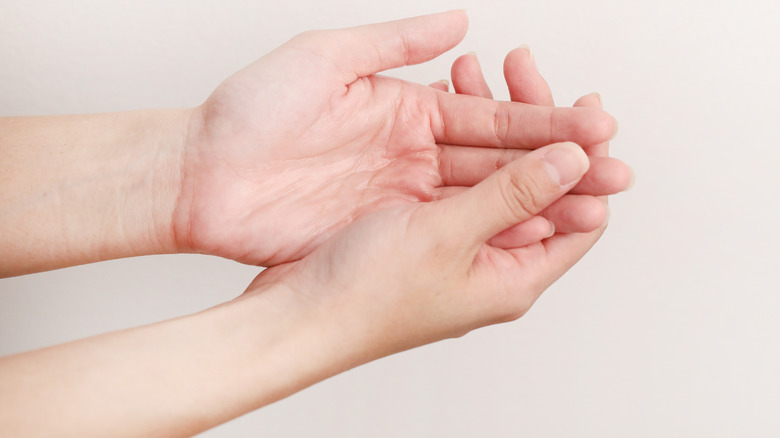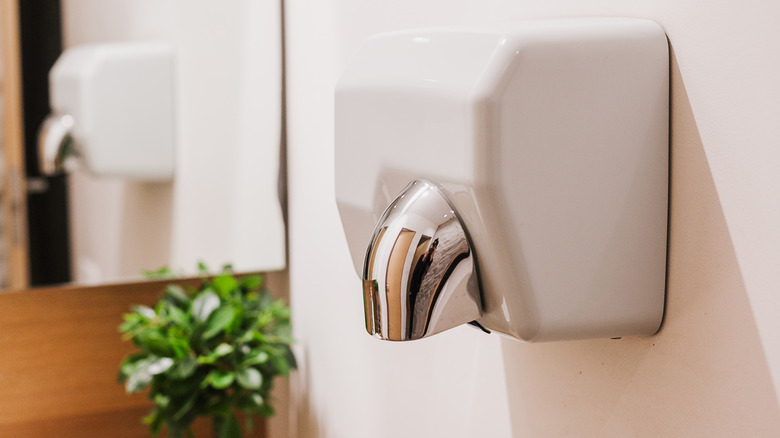What's The Best Way To Dry Your Hands?
Grabbing a public restroom door handle only to find that it's sopping wet is cringeworthy and not exactly hygienic. You hope that what you're touching is only sink water from someone who failed to fully dry their hands. But if you're trying to avoid germs, you may be surprised to learn that research from Mayo Clinic Proceedings finds wet hands are more likely to spread bacteria than dry hands. In other words, it's not enough to lather up your hands at the sink, rinse, and walk away. So then what's the ideal way to remove that excess water from your palms and digits?
For hand-drying to be most effective, one must take into account drying method, drying speed, degree of dryness, amount of bacteria removed, and cross-contamination prevention. "One goal is to ensure that you do not re-contaminate the hands with bacteria in the process of washing or drying the hands," physician and health expert Dr. Nesochi Okeke-IgbokweOkeke-Igbokwe told Reader's Digest. If you have the option to dry your hands with paper towels, cloth towels, or an air-dryer, any of those methods work better than shaking your hands in the air or wiping your palms on your clothes on your way out. But which is the safest bet for preventing germ spread?
Avoid these methods of drying your hands
Experts tell us that thorough hand-drying must be a part of hygiene in order to help curb bacterial transmission. Yet nearly 40% of Americans don't completely dry their hands after washing, with patience for hand-drying averaging only 15 seconds (via Infection Control Today).
You might be tempted to use the old-school drip-dry method when pressed for time or trying to avoid contact with bathroom surfaces, however leaving your hands damp could leave you at even greater risk for catching germs. A study published in Epidemiology & Infection found that when undried hands touched food or other areas of the skin, the bacterial transmission numbers were in the thousands, and those numbers decreased progressively as residual moisture was removed from the hands.
A hands-free dryer is just the solution, then, right? Unfortunately, not so much. When it comes to bacterial transmission, "using hand dryers in public restrooms is the worst way to dry your washed hands," Dr. Nesochi Okeke-Igbokwe told Reader's Digest. In a 2018 study published in ASM Journals, researchers examined the differences between bacterial exposure from standard bathroom air versus bacterial exposure from hand dryer air. They found that agar plates placed under the hand dryer for 30 seconds contained between 18 to 60 colonies of bacteria, while plates exposed to uncirculated bathroom air contained less than one colony per plate.
The best hand-drying option, if available, is a disposable paper towel, according to Mayo Clinic Proceedings. Because paper towels can dry hands efficiently and remove bacteria effectively, experts claim they are superior to electric air dryers when it comes to hygiene.


